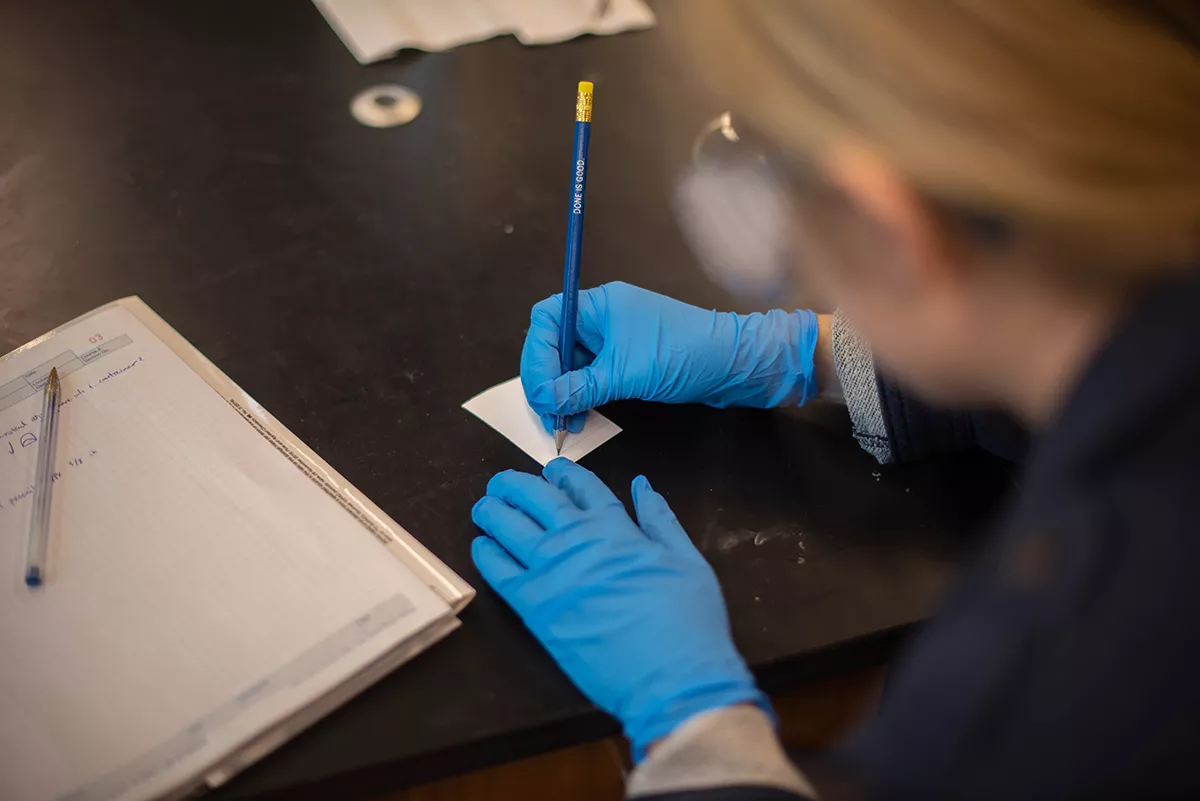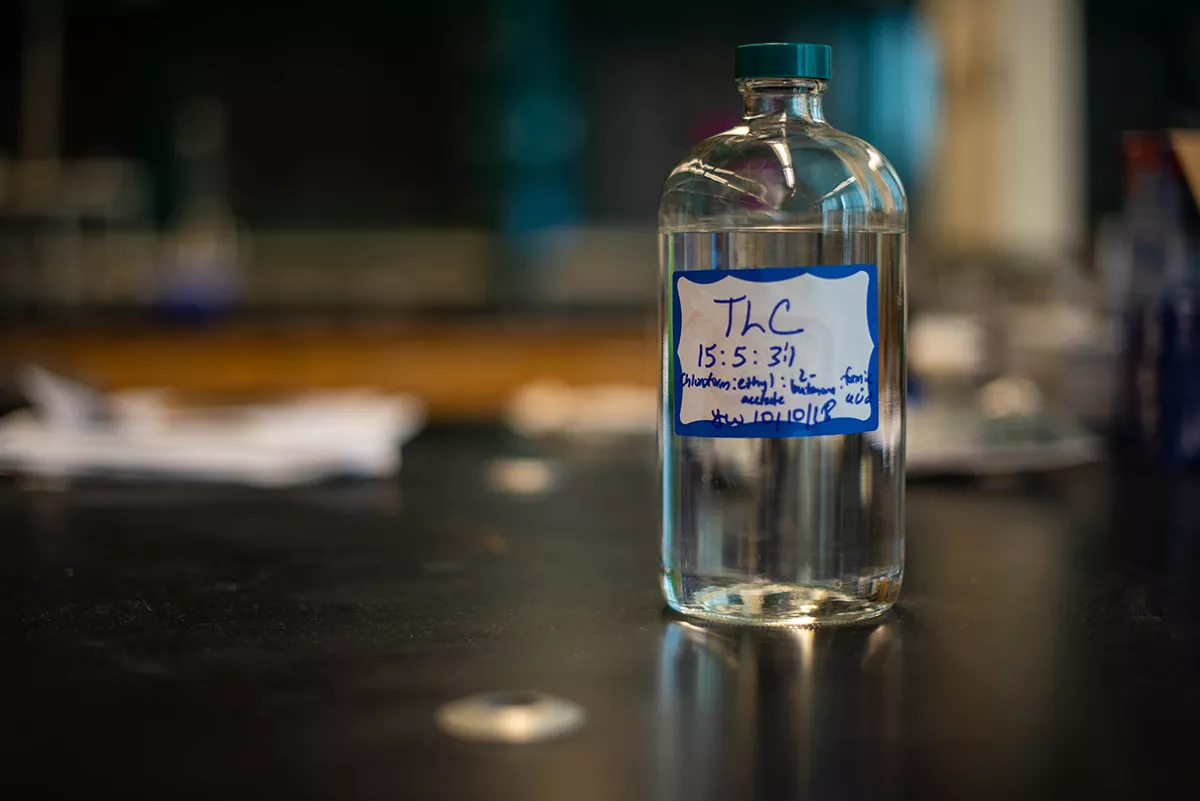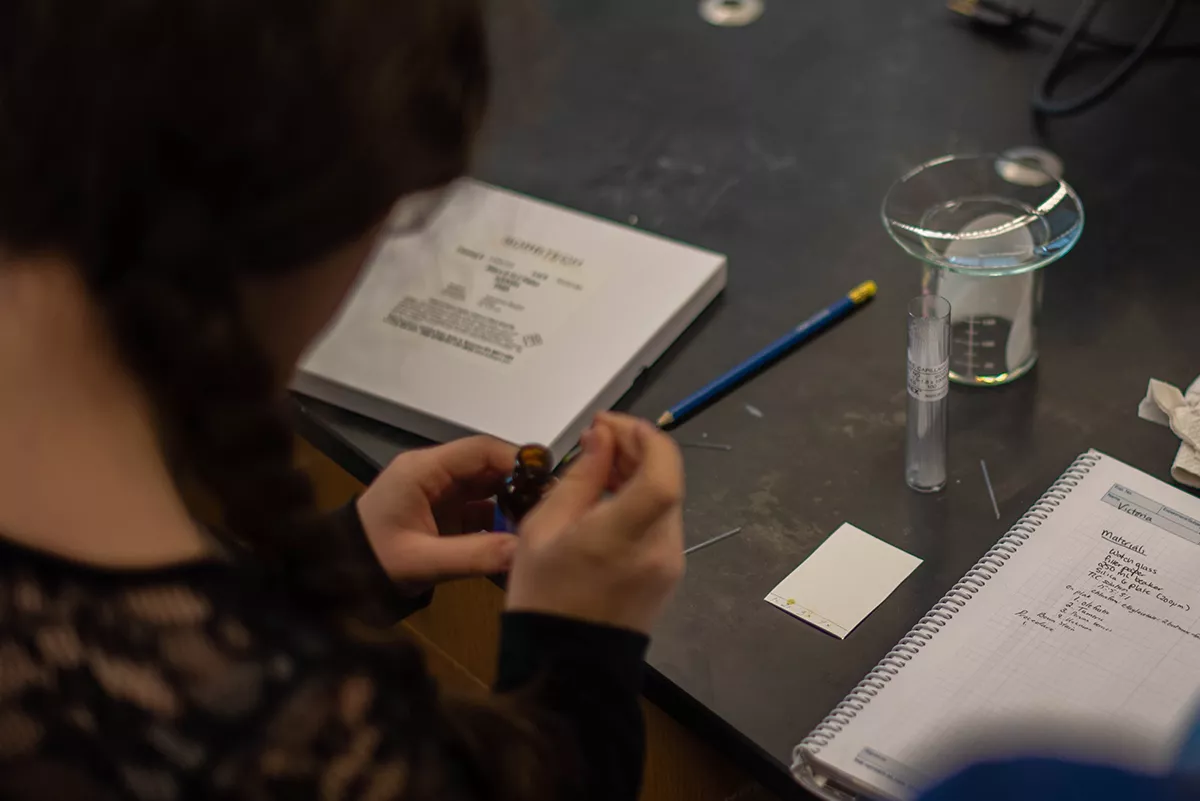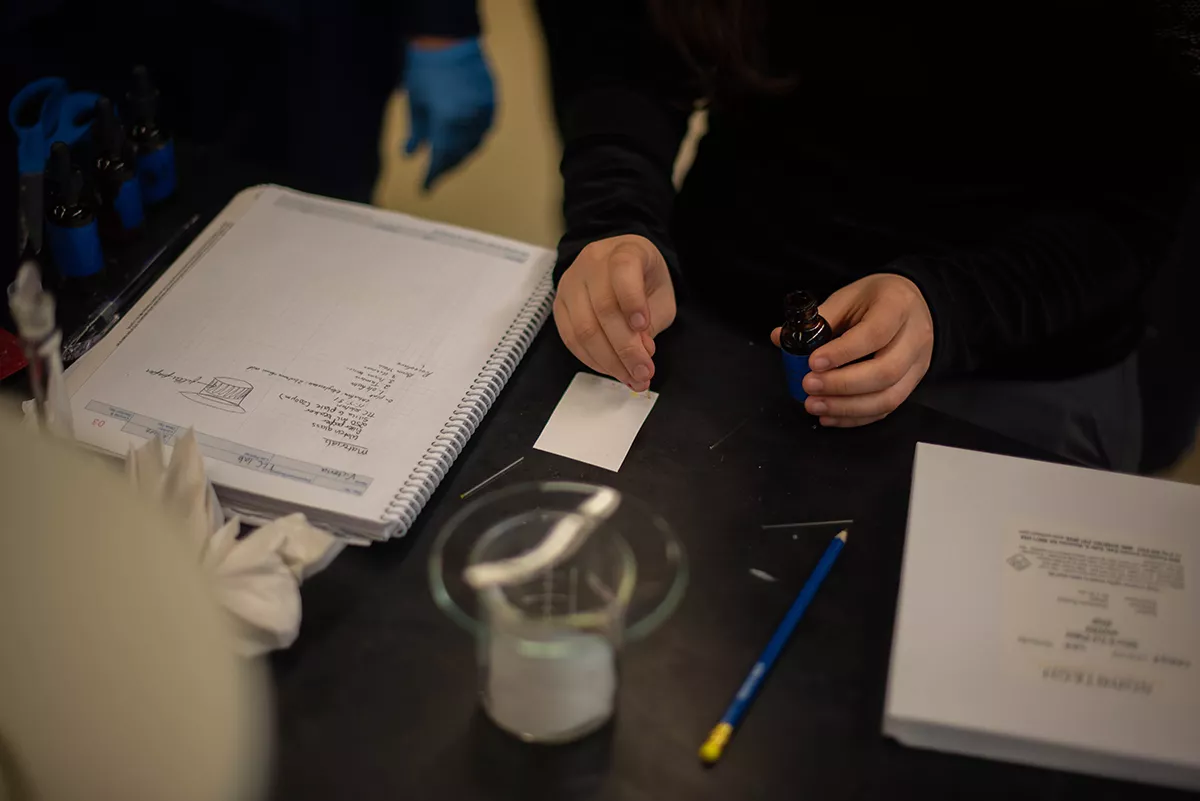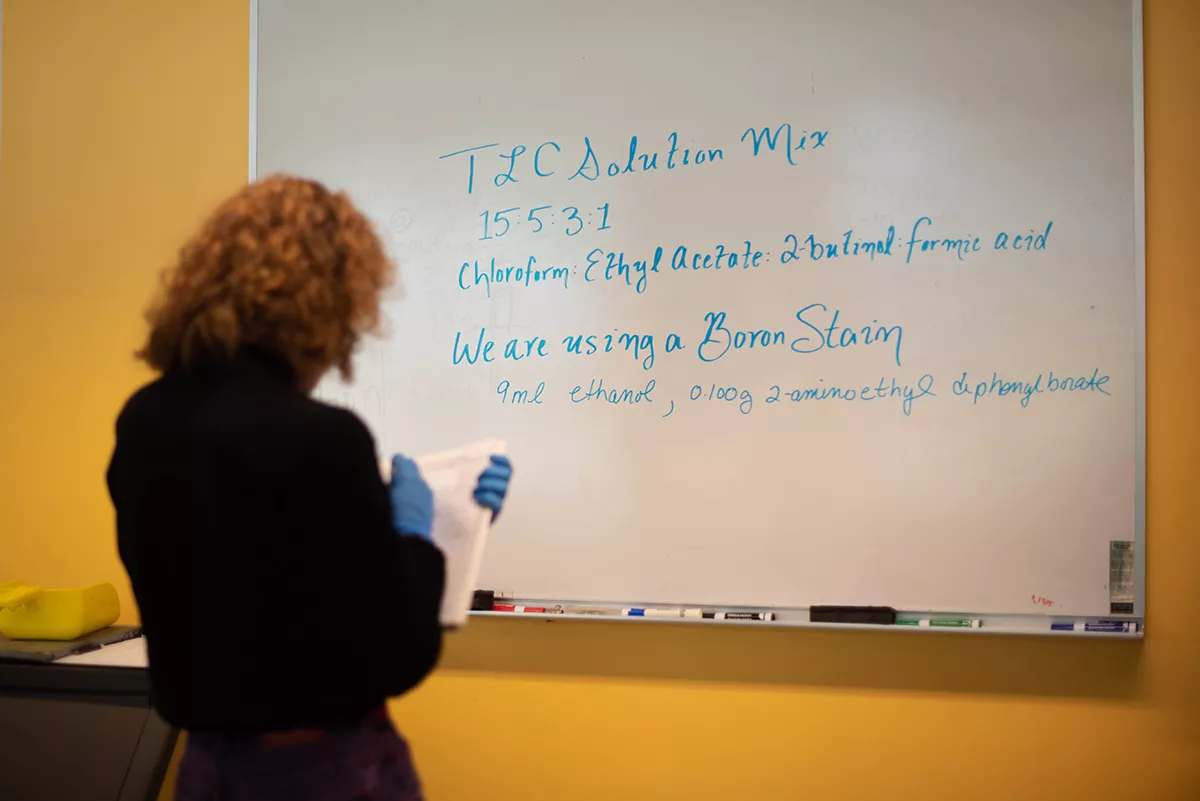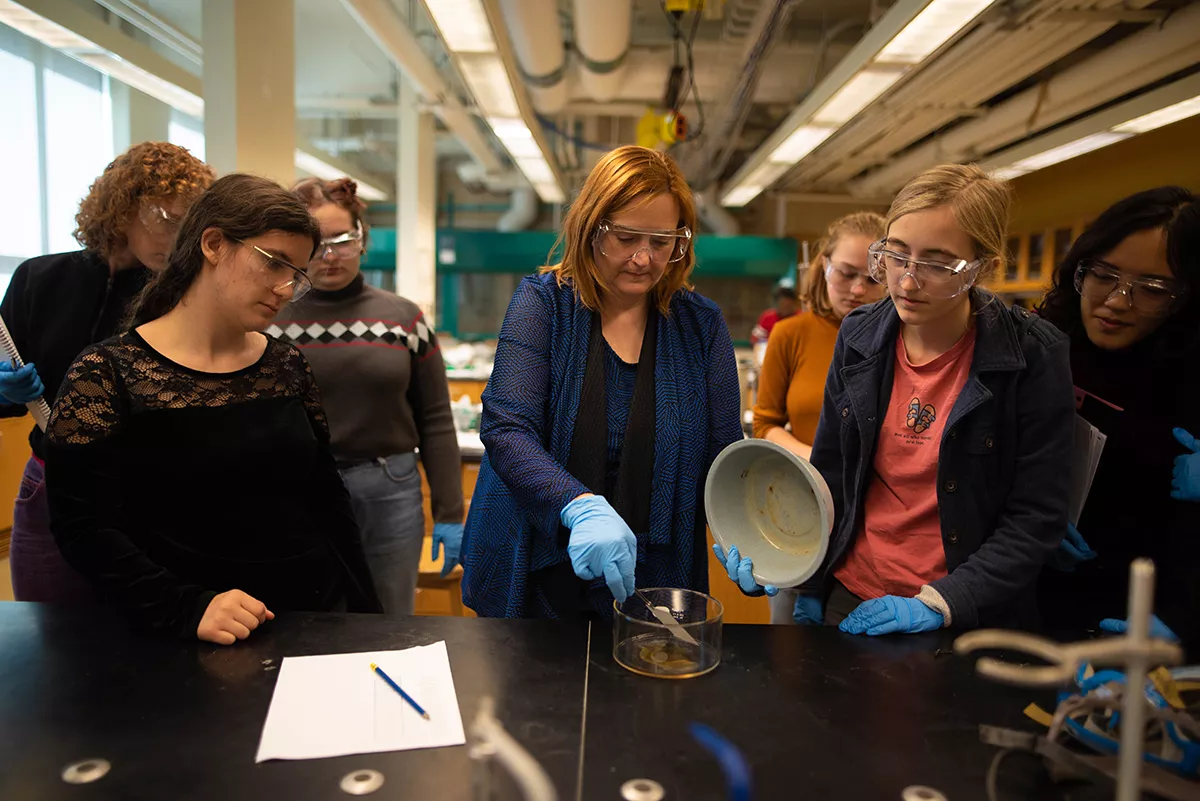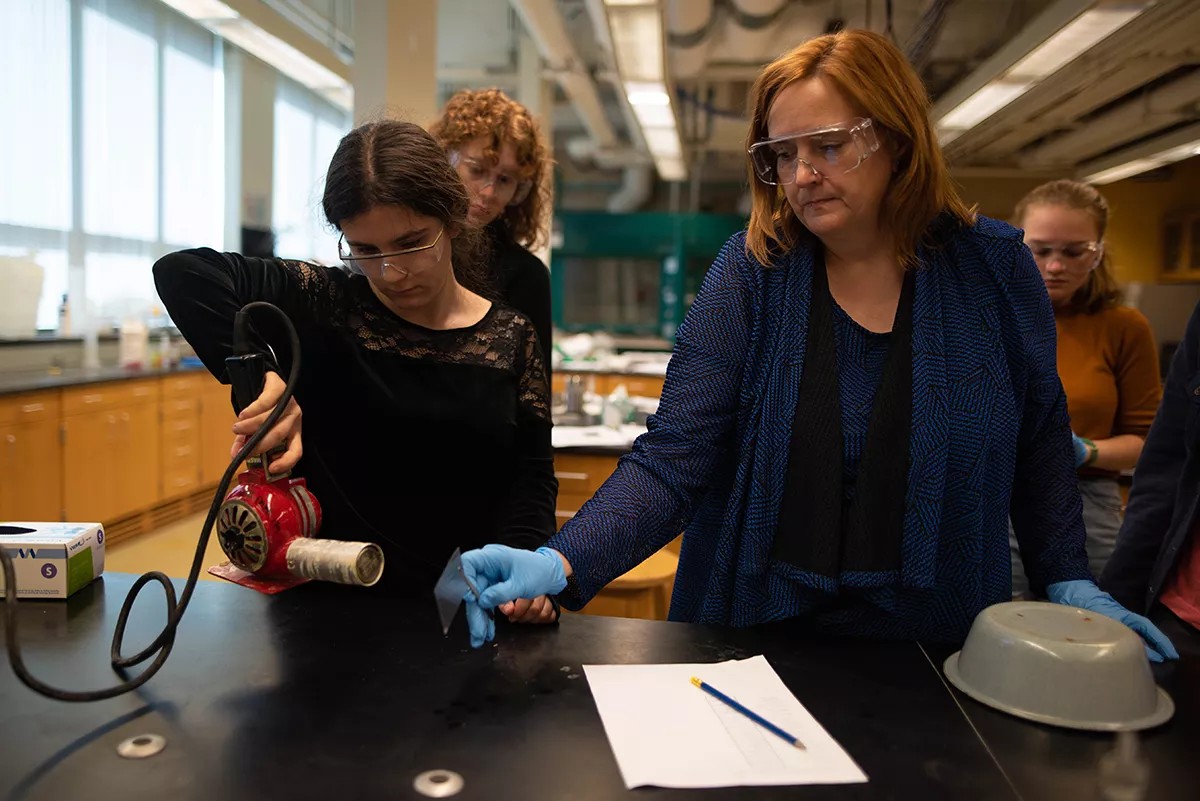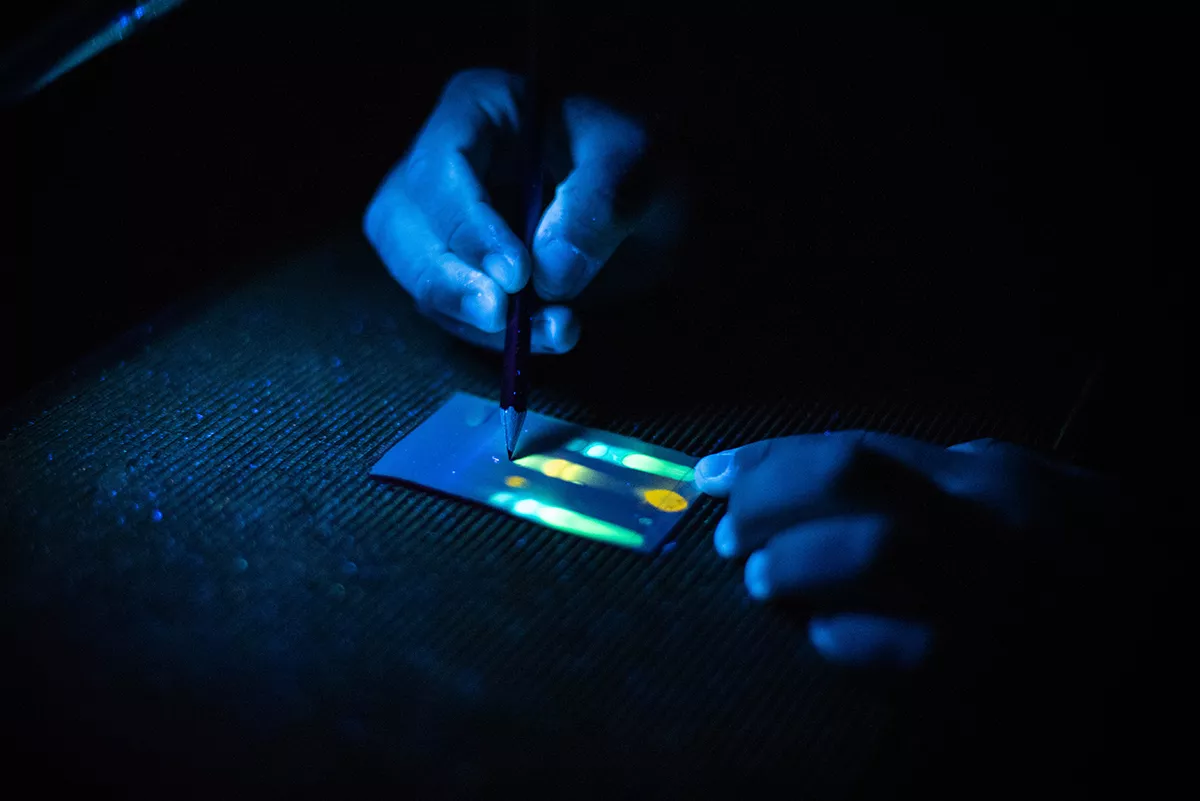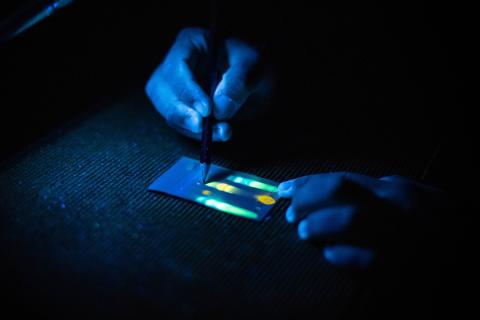Students Analyze Early Byzantine Textiles in 360°
Thin-layer chromatography is used to identify ancient dyes.
Analysis of Art: Early Byzantine Textiles, taught by the College's Art and Artifacts Collections Manager Marianne Weldon, introduces students to the science of textiles through hands-on training in the analysis of textile weaving techniques and materials. The course is part of the 360° Textiles in Context.
Recently students in the class used thin-layer chromatography to identify several types of dyes commonly used in ancient textiles: Old Fustic, Persian Berries, and Turmeric.
Shown on the plate are: Old Fustic, Turmeric, Persian Berries, and the unknown which is Old Fustic. Old Fustic contains three chorophores that separate out (Morin, Maclurin and Kaempferol). Turmeric contains two (Curcumin and Demethoxycurcumin). Persian Berries contains three: Rhamnetin, Kaempferol and Quecetin). Students measure the distance that the chromophores travel in the solvent phase compared to the distance the solvent phase travels in the same time.
Additional courses in the 360° are:
History of Art 218: Byzantine Textiles in Life, Death, and Afterlife, taught by Associate Professor of History of Art Alicia Walker.
This course explores the manifold uses and meanings of early Byzantine textiles in the late antique and modern worlds. We focus on so-called Coptic textiles, which were excavated from late antique and early Byzantine funerary and occupation sites throughout Egypt beginning in the late nineteenth century. Attention is paid to the popularity of early Byzantine textiles among modern dealers and collectors, and to the display of these objects in museum exhibitions from the early twentieth century to the present. We also recontextualize these garments and furnishings in their original functional and social contexts so as to understand their uses and meanings in early Byzantine society.
Topics in Exhibition Strategies: Byzantine Textiles, taught by Associate Professor of History of Art Alicia Walker and Curator for Art & Artifacts Carrie Robbins.
This course builds toward a student-curated exhibition of early Byzantine textiles. Students will investigate past exhibitions of textiles, including early Byzantine textiles, as case studies, reading catalogues and accounts of critical reception in order to understand different curatorial strategies and to apply what they learn in the curatorial organization of their own public exhibition.
Published on: 10/24/2018
